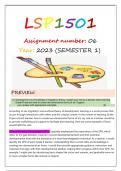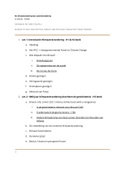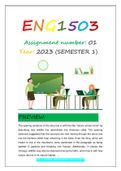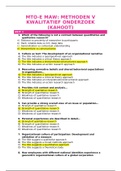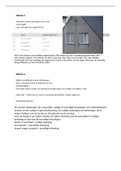Other
LSP1501 ASSIGNMENT 6 S1 2023
- Institution
- University Of South Africa (Unisa)
The document outlines various aspects related to art education in a classroom setting. It begins by discussing the principles of design and their application in artwork. It then explores the importance of holistic development in children and how art can enhance emotional and social development. Add...
[Show more]
